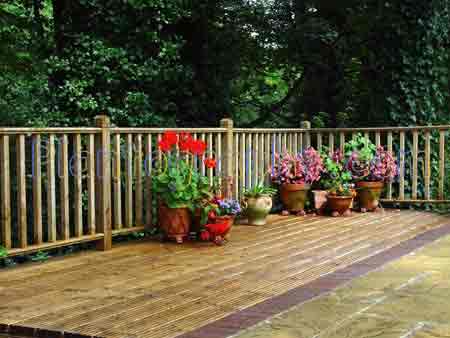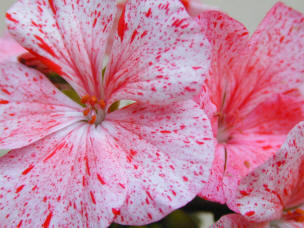Poinsettias (Euphorbia pulcherrima) A Christmas Houseplant
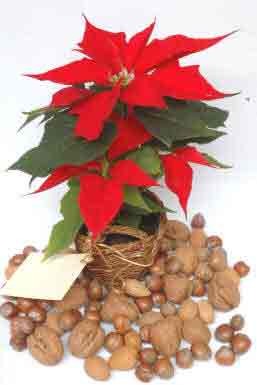
Poinsettias are part of a huge range of often hardy plants perennials and shrubs in the Euphorbia family. Euphorbias generally share the common name of Spurge, Milkweed or Mexican Flame Leaf. (Spurge, as it was once used in medicine as a purge treatment. Milkweed for the white latex sap which incidentally, is at least an skin irritant, or can lead to other problems if ingested.) It is widely grown as an outdoor plant in parts of Mexico and other warm countries.
You don't have to discard that favorite Christmas houseplant - the Poinsettia - after Christmas. You can make it burst into colour next year as well. The year round treatment of Poinsettias discussed here! But first your Euphorbia at Christmas.
At 55-60F red poinsettias will stay colorful for 6 weeks and white ones for about 2 months. The newer forms or cultivars often remain attractive until spring.
It is a mistake to think that the showy parts are the flowers. In fact they are called bracts modified leaves. In the case of the Poinsettia, the bracts surround the central flower cluster m- they simply serve as attraction and landing point for pollinating insects. Few insects would see the flowers from afar! As with most bracts, they are a different shape to the rest of the foliage.
Highly regarded as a Christmas house plant, Euphorbia pulcherrima is often grown as a garden plant year round in warmer countries. In the UK and other cold-winter countries, it is normally bought just before Christmas when the bracts are fully in flower. The bract colour timing for Christmas is a result of special daylight length regime by specialist growers.
Care of Poinsettias
The main requirement for success with your Poinsettia is a warm room not less than 55 deg day or night. (Higher in the day ideally human comfort temperatures)
Firstly,
avoid buying your Christmas Euphorbia from a street market
our outside the florist shop. Even a short spell in such
cold and draughty situations will set the plant back and
maybe even result in total demise.
Watering should be kept to a minimum allowing the soil to drain and dry before the next spell of water. Do NOT stand it in a saucer of water. This will invariably lead to root problems or rot. If you have under-done the watering and the plant starts to wilt, a good soaking with lukewarm water will normally bring it back to condition. Again do not stand it in water.
Weekly
feeding with a dilute houseplant food will be beneficial
throughout its colour time. Feed only when the compost is
moist even if that means water one day and feed the
next.
Position the plant in a light well ventilated spot preferably not directly on a window ledge or in direct sunlight. Good light is essential, or the colourful bracts will start to turn green. Draughts are to be avoided, as is moving the plant from place to place. It likes to settle down in a comfortable place.
Types of Poinsettia
There are many different cultivars now with red, pink, yellow or cream leaves. The red will always be favorite (for me!)
A Comprehensive Guide to Poinsettia Varieties
Poinsettias (Euphorbia pulcherrima) are synonymous with the holiday season. Their vibrant bracts, which people often mistake for flowers, add a splash of color to winter festivities. Here's a guide to some of the most interesting types of Poinsettia plants.
Red Poinsettias:
-
'Prestige Red':
One of the most popular varieties, this cultivar is known for its large, bright red bracts and dark green leaves1. -
'Winter Rose Red':
This unique variety has curled, rose-like bracts. It's a compact plant, ideal for small spaces2.
Pink Poinsettias:
-
'Princettia Pink':
This cultivar stands out with its soft, light pink bracts. It's perfect for a modern, chic holiday look3. -
'Marble Star':
This variety has creamy white and pink marbled bracts, offering a sophisticated twist on the traditional Poinsettia1.
Yellow Poinsettias:
-
'Golden Glow':
As the name suggests, this variety has golden yellow bracts that give a warm, festive glow2. -
'Lemon Snow':
This Poinsettia has pale, lemon-yellow bracts that provide a gentle burst of color4.
Lesser-known varieties:
-
'Orange Spice':
This variety lives up to its name with bracts in a vibrant shade of orange, adding a spicy touch to the holiday season5. -
'Ice Punch':
This unusual variety boasts striking red bracts with a central white pattern that looks like it's been dusted with frost6.
Care Tips: Regardless of the variety, all Poinsettias require similar care. They prefer indirect light, well-drained soil, and temperatures between 65-70°F (18-21°C). Water when the soil surface feels dry to the touch7.
Trivia and History:
Poinsettias are native to Mexico and were cultivated by the Aztecs for medicinal and ornamental purposes. The plant's association with Christmas began in the 16th century due to a Mexican legend about a girl who could only offer weeds to Jesus on Christmas Eve, which miraculously turned into beautiful red 'flowers'. The plant was named after Joel Poinsett, the first U.S. Minister to Mexico, who introduced it to the U.S. in the 1820s8.As you can see, there's a Poinsettia for every holiday décor style, from the classic red to chic pink or even a frosty 'Ice Punch'. Whichever variety you choose, this iconic plant is sure to add a festive touch to your home.
Common Pests and Diseases of Indoor Poinsettias
Indoor poinsettias can be vulnerable to several pests and diseases. Here is a detailed list of the most common ones:
Pests:
Whiteflies:
These tiny, white insects are often found on the underside of leaves. They suck sap from the plant, causing yellowing and dropping of leaves. They reproduce quickly, with a life cycle of just a few weeks, so infestations can escalate rapidly. Prevention and Control: Regularly inspect plants and isolate any with signs of infestation. Use yellow sticky traps to catch adults. Insecticidal soaps or neem oil can be effective against larvae and adults.Spider Mites:
These tiny mites can cause significant damage by sucking sap from leaves, leading to yellowing and drop-off. They prefer dry conditions and can multiply rapidly indoors. Prevention and Control: Maintain high humidity and regularly mist your plants. Neem oil or miticides can be used if an infestation occurs.Aphids:
These small, green or black insects feed on plant sap, causing distorted growth and sometimes spreading disease. Prevention and Control: Regularly inspect new growth for aphids. Insecticidal soap or neem oil can help control them.Diseases:
Botrytis Blight (Grey Mold):
This fungal disease causes brown spots on leaves, often with a fuzzy grey mold. It thrives in cool, humid conditions. Prevention and Control: Improve ventilation around your plants and avoid wetting the leaves. Remove affected parts and apply a suitable fungicide.Powdery Mildew:
This fungus appears as white, powdery spots on leaves and stems. It can cause leaves to twist, buckle, or become discolored. Prevention and Control: Ensure good air circulation and avoid overcrowding plants. Fungicides can be used if necessary.Root Rot:
Overwatering can lead to fungal root rots, causing wilting and yellowing of leaves, and eventual plant death. Prevention and Control: Water plants only when the top inch of soil is dry. Repot plants if root rot is suspected, using fresh, well-draining soil.Overall, maintaining good cultural practices is key to preventing pests and diseases. This includes regular inspection of plants, proper watering, good air circulation, and hygiene practices such as sanitizing tools and pots. If problems do occur, early detection and treatment can save your Poinsettia and keep it looking its festive best.
Problems indoors with Poinsettias
Over-watering can lead to root rot.
Many problems with Poinsettias are bought about by sheer neglect of the plant after it has fulfilled its function during the festive season! Don't simply leave it in a corner and expect it to do well.
Poisonous - or not? There are conflicting theories as to whether this particular Euphorbia is poisonous. Most of the family are. Better to assume so.
Propagating Euphorbia
Poinsettias can be propagated from stem cuttings in spring. Best with a little bottom heat, so a heated propagator is a boon. The softwood cuttings - tip growths - should be cut cleanly from the plant, and the bases immediately dipped into warm water to prevent any bleeding of the milky sap. Take care not to get any sap on skin - irritating at least. Powdered charcoal is also good to prevent the sap bleeding.
Comprehensive Guide to Propagating Poinsettias
Poinsettias (Euphorbia pulcherrima) are traditionally propagated through cuttings, as this method maintains the genetic characteristics of the parent plant. However, they can also be grown from seeds, albeit less commonly due to the lengthier process and variability in outcomes.
Propagation Through Cuttings:
- Step 1: Select a healthy, mature Poinsettia. Cut a 4-6 inch piece from a healthy stem, preferably with 3-5 leaves remaining on it.
- Step 2: Remove the lower leaves and dip the cut end into a rooting hormone.
- Step 3: Plant the cutting in a small pot filled with a well-draining potting mix. Water thoroughly.
- Step 4: Cover the pot with a clear plastic bag to create a humid environment. Place it in a warm area with indirect sunlight.
- Step 5: After 3-4 weeks, check for root development by gently tugging on the cutting. If there's resistance, roots have formed.
Propagation Through Seeds:
- Step 1: Collect seeds from a mature Poinsettia plant after the flowering season. The seeds are located in the center of the spent blooms.
- Step 2: Sow the seeds in a well-draining soil mix. Cover them lightly with soil.
- Step 3: Maintain a warm temperature and keep the soil moist but not waterlogged.
- Step 4: Germination should occur within 1-2 weeks. Once the seedlings are large enough to handle, transplant them into individual pots.
Common Mistakes and Troubleshooting:
- Overwatering: Both cuttings and seedlings need constant moisture, but overwatering can lead to root rot. Ensure your potting mix drains well.
- Poor Lighting: Poinsettias need bright, indirect light. Too much direct sunlight can scorch the plants, while too little light can lead to weak, leggy growth.
- Incorrect Temperature: Poinsettias prefer temperatures between 60-70°F (16-21°C). Temperatures outside this range can hinder germination or root development.
Creative Applications:
While you can't change the color of Poinsettia flowers through propagation, you can certainly experiment with different parent plants to propagate a variety of colors, ranging from the traditional red to white, pink, and marbled varieties. You can also try different growth habits. For instance, you could train a Poinsettia into a standard (tree form) by propagating a long-stemmed cutting and removing the lower leaves as it grows. Remember that successful propagation requires patience and attention to detail, but the reward is worth the effort!Growing Poinsettias outdoors.
In areas of mild or hot summers, Poinsettias can be grown outdoors until autumn/fall when time to bring indoors before the frosts. They are surprisingly hardy. I have found one growing in the open ground near the summit of Thailand's highest mountain - also in several other high altitude areas! Not always totally frost free areas. I suspect that once established, the Euphorbia can probably survive a degree or so of frost! It will need a few seasons of frost-free growth first though - I think.
However, as a pot plant, once the bracts have changed back to green, the plants will be quite happy if cared for outdoors after the last of the spring frosts.
Getting your Poinsettia in colour for next year!
Back to A-Z Houseplants | How to Colour your Poinsettia next year
Best Selling Gardening Products
Popular Gardening Sections
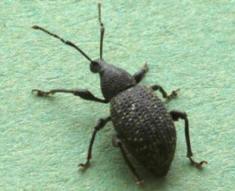
Problems
Identify Weeds in The Garden - How to deal with weeds. Diseases and Pest which harm your garden and plants, learn how to prevent, deter and erradicate your garden problems.
Garden Problems
Pruning
Pruning Guide. Shrubs flower better with correct pruning. Many illustrations and examples of what to do - and when. Includes evergreens, roses, flowering shrubs, spring flowering shrubs and pruning for stem effect. This is our most viewed and comprehensive section,
Pruning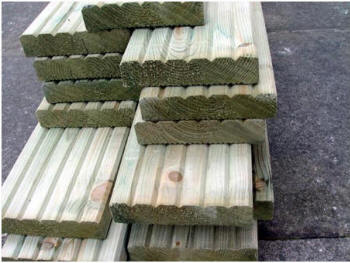
Gardening Businesses
Gardening Businesses listed in the UK counties and USA states. County and State Listings of businesses involved in Garden supplies and services. If you wish to be added to the Directory, please send us your information. Having problems, use the search box
Businesses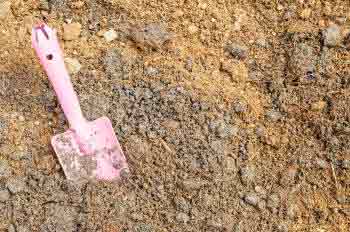
Gardening
In this section you will learn about Gardening Basics, Containers, Landscaping, Propagation and Soil.
Gardening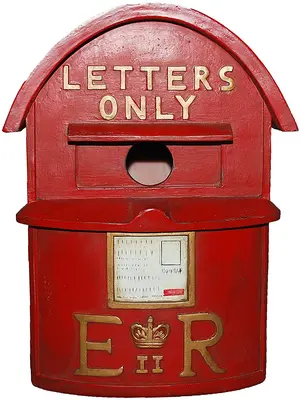
Gardening Gifts
Gardening Gifts and Reviews, Read Before you Buy
- Gardening Gifts Ideas
- Gifts For Her
- Gifts For Men
- Power Tool Gifts
- Cheap Gifts
- Personalised Gifts
- Wildlife Gifts
- Family Gifts

